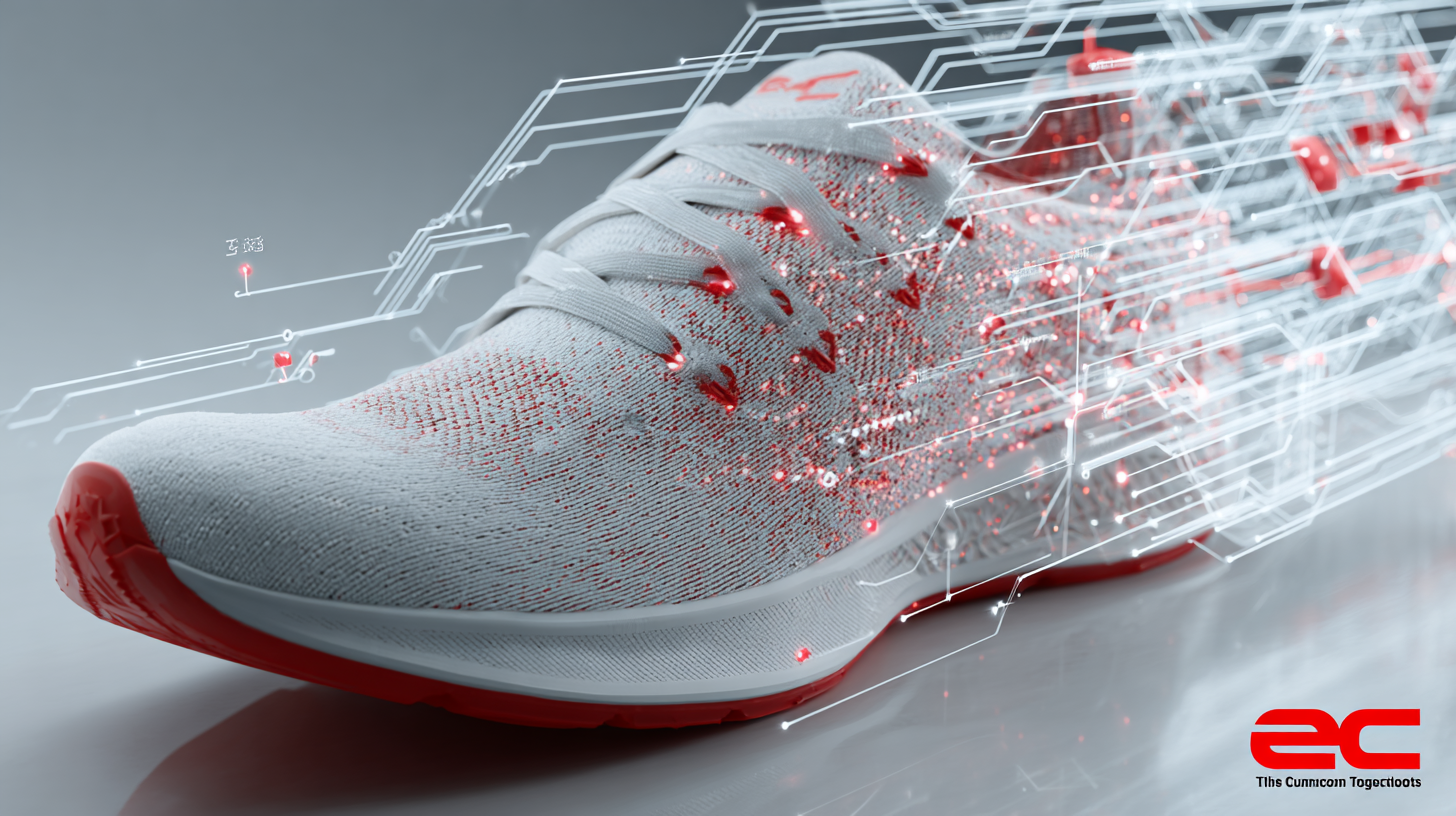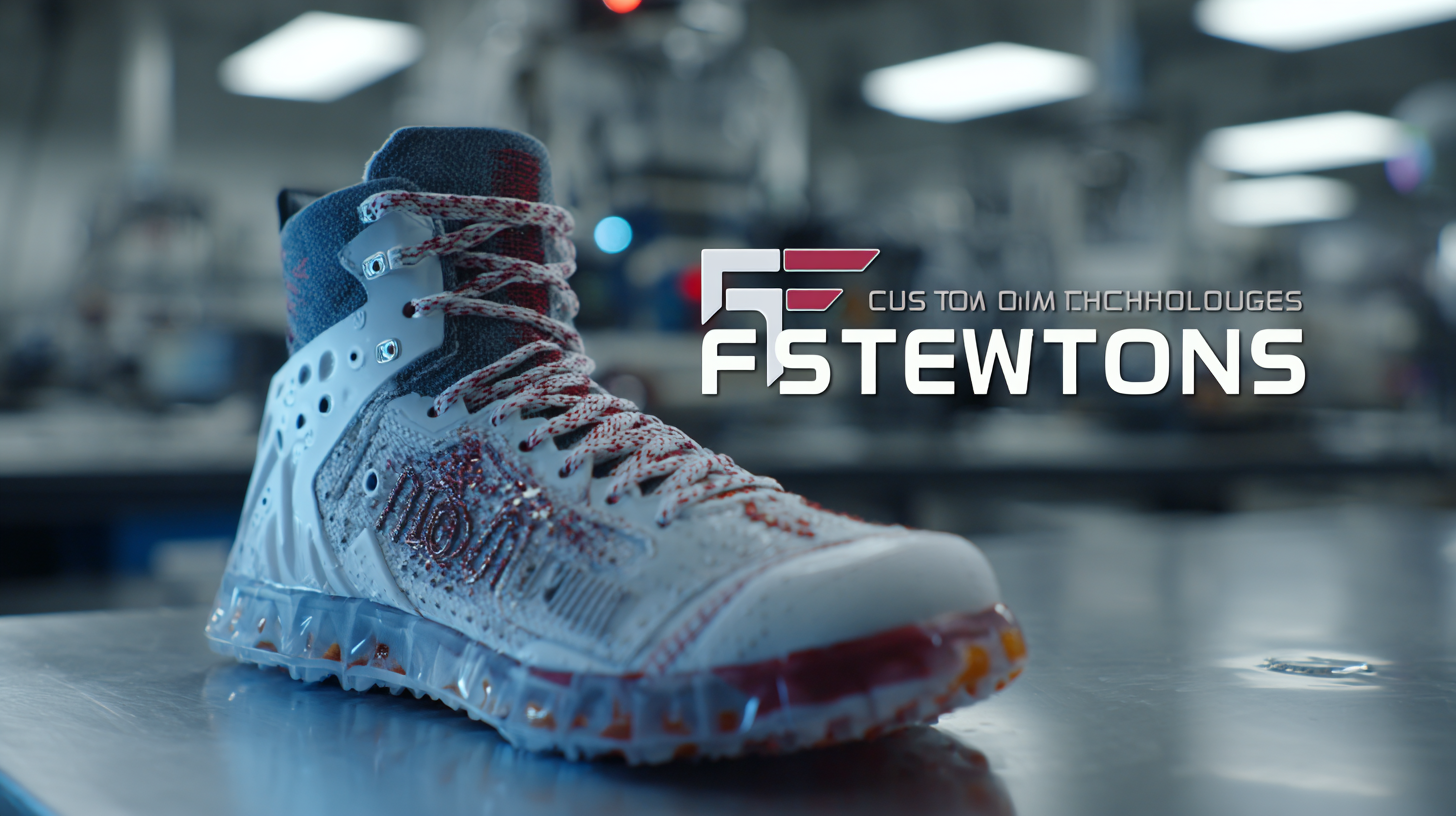
As we look toward 2025, the landscape of custom athletic footwear is being transformed by a wave of emerging technologies. According to a recent report from Grand View Research, the global custom athletic footwear market is expected to reach $10 billion by 2025, driven by increasing consumer demand for personalized products that enhance performance and comfort.

Innovations such as 3D printing, advanced materials, and smart technology are not only enabling brands to tailor footwear to the unique needs of athletes but also enhancing the overall experience of the consumer. This burgeoning market reflects a significant shift in consumer preferences, where the emphasis is placed on fit, personalization, and performance optimization.
Understanding these trends is essential for stakeholders aiming to harness the potential of custom athletic footwear in the years to come.
As we approach 2025, the landscape of custom athletic footwear is being transformed by innovative materials that are redefining production methods. One of the most exciting advancements is the introduction of 3D-printed materials, which allow for unparalleled customization and precision. This technology enables brands to create shoes tailored to an individual's unique foot shape and biomechanics, enhancing both comfort and performance. By using lightweight yet durable polymers, manufacturers can produce footwear that not only fits better but also provides optimal support during physical activities.
In addition to 3D printing, sustainable materials are becoming a cornerstone in the production of custom athletic shoes. Innovations such as plant-based sneakers and recycled plastics are gaining traction, appealing to environmentally conscious consumers. These materials not only reduce waste but also diminish the carbon footprint of footwear manufacturing. As companies increasingly adopt these sustainable practices, they are setting a new standard in the industry, merging high performance with ecological responsibility. The combination of advanced technologies and eco-friendly materials signifies a promising future for custom athletic footwear, aimed at delivering performance while protecting the planet.
The athletic footwear market is witnessing significant transformation, driven by advancements in AI and data analytics. By 2025, personalized athletic footwear experiences will take center stage, as technologies like virtual try-on systems become mainstream. Users will benefit from innovations such as foot tracking, augmented reality rendering, and real-time fitting solutions that allow them to visualize how shoes fit through their smartphone cameras, thus removing the ambiguities associated with online shopping.
Tip 1: When entering the digital shopping realm, ensure that the brands you engage with leverage AI technologies for personalized fitting. This can vastly enhance your shopping experience, making it easier to find the perfect pair.
Moreover, personalization extends beyond simply choosing the right size. Brands are increasingly adopting data-driven marketing strategies that resonate with individual consumer preferences. This shift makes it crucial for consumers to recognize the value of tailored recommendations, which can improve the overall satisfaction with their purchases.
Tip 2: Take advantage of online platforms that offer customized recommendations based on your unique foot shape and activity levels. Engaging with such services can help you discover products that amplify your performance and comfort.
The advent of 3D printing technology is revolutionizing the landscape of custom athletic footwear, providing unprecedented design flexibility and sustainability. With the ability to create intricate designs that were once considered unattainable through traditional manufacturing methods, brands can now produce footwear tailored to the unique needs of athletes. This level of customization allows for enhanced performance, comfort, and support, catering specifically to the biomechanical requirements of various sports and activities.

Moreover, the sustainability aspect of 3D printing cannot be overlooked. Traditional footwear production often involves considerable waste and environmentally harmful processes. However, 3D printing utilizes on-demand manufacturing, which reduces material waste and allows for the use of recycled or biodegradable materials. As companies increasingly adopt this technology, the potential to create eco-friendly footwear solutions expands, aligning corporate responsibility with consumer demand for sustainable products. This synergy of innovation and responsibility positions 3D printing as a pivotal force in shaping the future of athletic footwear, ensuring that performance and sustainability go hand in hand.
The integration of wearable technology into custom footwear is anticipated to revolutionize athletic performance by 2025. Innovations such as embedded sensors and biometric data collection are transforming how athletes interact with their footwear. These advancements allow for real-time performance monitoring, providing athletes with insights into their biomechanics and helping them make adjustments to enhance their training outcomes. For instance, footwear equipped with piezoresistive sensors can analyze a runner's stride, alerting them to potential inefficiencies or risks of injury.

Moreover, the emergence of artificial intelligence (AI) in footwear design signifies a monumental shift in customization and performance enhancement. Brands are beginning to utilize AI to interpret data gathered from wearables, tailoring shoe designs to meet individual athlete needs. The recent introduction of AI-driven sneaker lines exemplifies this trend, showcasing a future where custom footwear is not only personalized but smart, adapting to the user's performance metrics. As the wearable technology market continues to grow, athletes can expect footwear that not only fits their physical requirements but evolves with their performance, ushering in a new era of athletic excellence.
The athletic footwear industry is witnessing a significant shift towards eco-friendly practices, driven by emerging technologies and a growing consumer demand for sustainability. By 2025, it is projected that over 60% of athletic footwear brands will incorporate eco-friendly materials into their production processes. Reports indicate that the use of recycled and bio-based materials is not just a trend but a necessity as consumers are increasingly conscious of their environmental impact. Brands that adopt sustainable practices can expect a 15-20% increase in sales, reflecting a palpable shift in market dynamics.
Innovations such as 3D printing and advanced supply chain technologies are enabling manufacturers to reduce waste and enhance efficiency. For instance, 3D printing can cut material usage by up to 50%, allowing for on-demand production that minimizes overrun inventory. Additionally, as outlined in various sustainability forums, companies are actively exploring renewable energy sources to power their manufacturing plants, aiming for carbon neutrality by 2030. This aligns with global efforts toward low-carbon futures, as highlighted in the recent international carbon neutrality expos. The focus on sustainable manufacturing not only fosters a healthier planet but also represents a lucrative opportunity for brands willing to adapt in this evolving market landscape.
